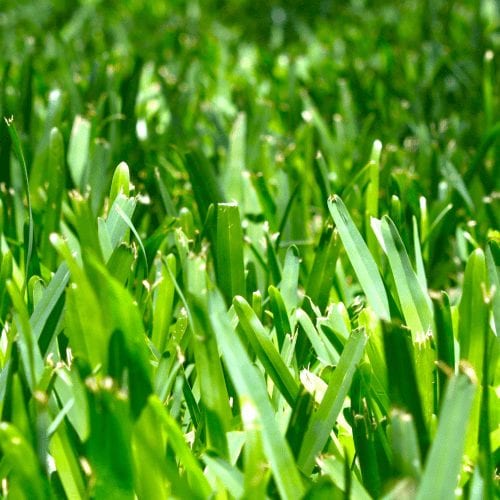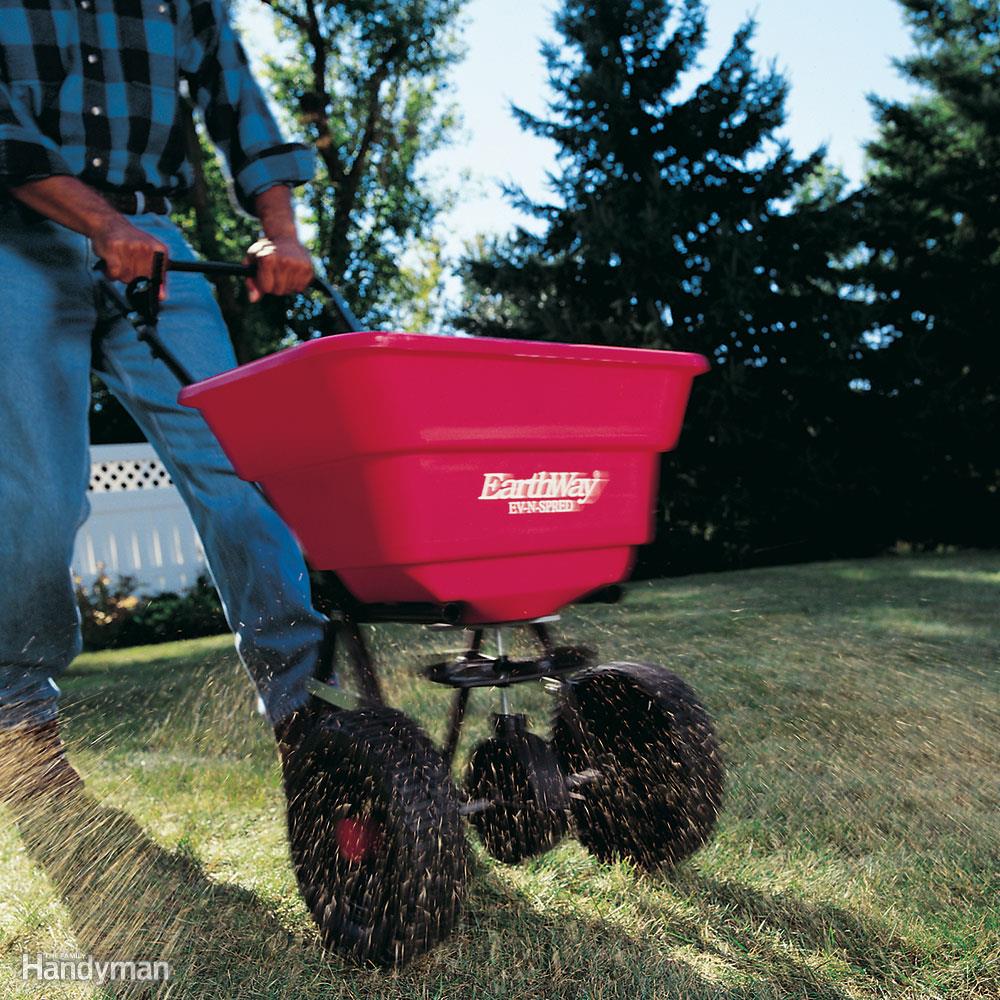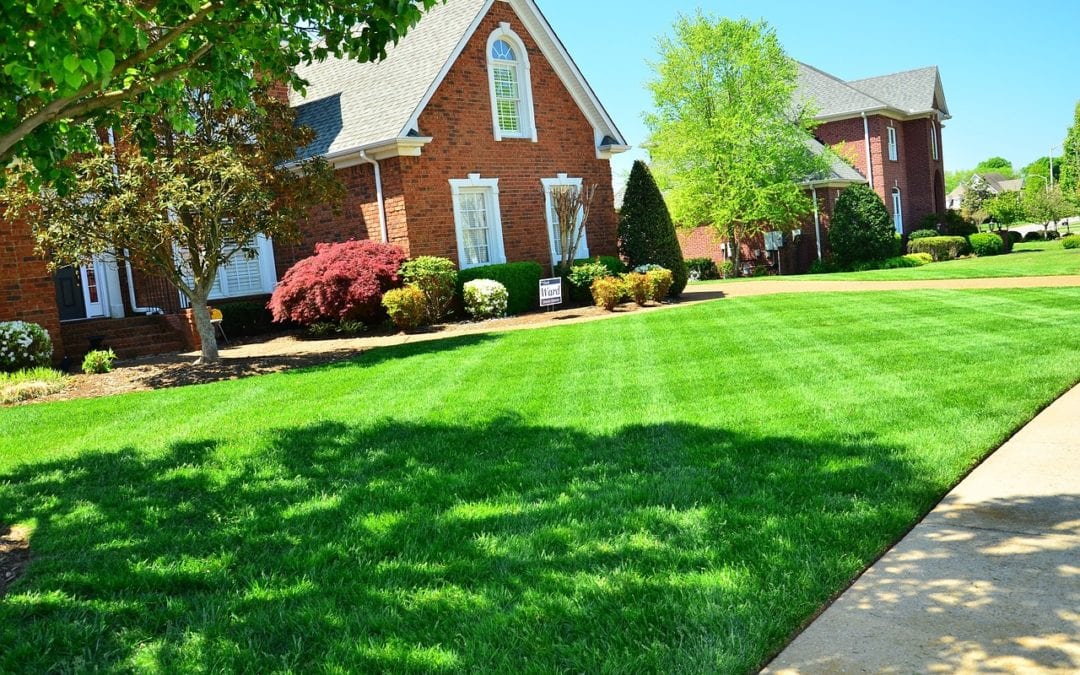Fall fertilizing is one of those gardening tasks that, while super important for healthy turf, many people tend to blow it off. It’s easy to think about fertilizing come spring time when you are ready to pull your grass out of dull, brown dormancy. But fertilizing at the right time in fall not only helps your lawn get a mean green come springtime, it also strengthens and protects it through fall and winter too. Read on to see our facts about fall fertilizing.
6 Facts About Fall Fertilizing Warm Season Grasses in San Antonio
Stored Energy: Turf is able to take in the nitrogen from fall fertilizer and use it to produce carbohydrates, a vital energy source, that are stored and then used to aid lawns that are trying to recover from past drought damage and/or winter damage. If your lawn barely survived this past summer in San Antonio, you should be running to the nursery for your 18-6-12 for some help A.S.A.P.
It’s Easy Being Green: The nitrogen that gets converted into the carbohydrate energy also helps provide your lawn a quicker green up come spring time. Does it feels weird applying fertilizer to a lawn that is about to get brown and go dormant? Remember, although the grass on the upper level of the soil goes dormant, the roots below the soil do not. Just think how great it will feel once spring comes around and you have the first green lawn in the neighborhood! Whoo hoo! Applying fall fertilizer will also prolong the green that is still left in your turf right now, delaying the onset of the blah winter browns.

Protection On Many Levels: Fall fertilizing offers your turf winter protection in multiple ways. It offers increased cold hardiness, protecting turf from inclement weather and harsh temperature damage. Fall fertilizing also provides protection from weeds, pests, and disease by creating a strong, resilient turf. A healthy lawn is ALWAYS your best defense from all of these invaders. (Special side note…stop watering lawns at night, if you haven’t already, to reduce the risk of the dreaded Brown Patch disease.)
Timing Is Of The Essence: The time to fertilize for fall is mid to late October and no later than mid November, so essentially, NOW! Your fall fertilizer choice for this time of year, should be one that is high in nitrogen and potassium and lower in phosphorus. Our Rainbow Gardens 18-6-12 Premium Winterizer fits the bill. This fertilizer is activated once it is watered in and it’s chemical make up allows the nutrients to be taken up by the plant right away. If organic fertilizer is your cup of tea, you are a little late to the party. Organic fertilizer should have been applied about a month and a half ago when we wrote our blog about it. Organic fertilizer takes longer for the ingredients to break down and be available for plant uptake, hence the difference in application times. But timing is perfect for 18-6-12. See this link for our blog on organic fertilizer.
Apply What You Need, No More, No Less: The average gardener tends to think that when it comes to fertilizing, more is better. That simply is not true, for any garden fertilizing. David Rodriguez, Horticulturist for Texas A&M AgriLife Extension Service of Bexar County, says when it comes to fall fertilizing, lawns need “NO more than 2 pounds of actual nitrogen per 1000 square feet. This equates to about 40 pounds of 18-6-12 on a 7200 square foot lawn.” With the average yard being around 5,000 sq. ft., you’ll most likely have a little left over fertilizer; but no worries, check out the next bullet point. Measure your yard, calibrate your spreader, and only apply what you need to your turf.

Fall Lawn Fertilizer Has Multiple Uses: Any leftover fertilizer can be put to great use in other areas of your landscape. Fall is a great time to fertilize your trees, shrubs, and woody perennials, AS LONG AS you do it at the appropriate time. Fertilize mid to late October and you’ve offered your trees, shrubs, and woody perennials protection from decay, cold temperatures, and even breakage. See why you’ve got to get going on this? Oh yeah, you can also use 18-6-12 in your veggie gardens!
So don’t delay, that’s all we got to say. We ain’t tryin’ to be mean; but if you wait, you won’t be green!
The Happy Gardener, Lisa Mulroy


Very helpful, but the bullet point for application rate didn’t make it.. Could it be posted? Also, is the fertilizer watered in? Thanks!
Sorry just seeing this Cathy! First off, thanks for reading. Second, the next bullet point was just explaining how you could use your extra fertilizer for your gardens. 😉
As far as calculating, you need to know the measurements of your yard, plus the type of spreader you have to calibrate the correct setting. Hope you were still able to fertilize on time!
What can I do if I failed to fertilize in the fall? Is it to late fertilize in the spring?
Hi Janis,
You can still fertilize for spring. We recommend our 19-5-9 formula. It would be best to fertilize as soon as possible, early April, for best results now. Attaching our lawn fertilization info so you can get on a regular fertilizing schedule. hoppe this helps. Lawn fertilization
Lost half of front lawn to both grubs and disease. Will winterize help bring it back. Is there anything else I can do. Was told not to use weed and feed. Is this true.
Hi Ronald,
Winterizer definitely helps to greenup and strengthen your turf, and a healthy lawn is definitely less susceptible to pest and disease issues. However, if you completely lost those parts of your lawn to grubs and disease, you may need to sod those areas or reseed them depending on what type of turf you have. Winterizer/fertilizer can keep the are of turf that you still have healthy, and you can make plans to fertilize again in spring. Grub control should be on your calendar for applying in late May to early June since you’ve had issues with those pests in the past. As far as disease, do you know what disease you’ve been battling? You can check out our San Antonio Lawn page for guides and info on both pests and disease to see if you can hone in what has been attacking your lawn, or write back with more info.
We never recommend weed and feed products because the application times for both of those to be effective are at different times of the year (info also on our lawn page). Hope this helps.
Any tips on what setting to use on our spreader? Each season I struggle to figure it out. I use a Scotts spreader
Hi Sara,
Generally when customers are questioning their spreader settings, we advise to open the holes about a 1/3 of the way and that usually is the right amount for applying fertilizer.
If I put down organic fertilizer 2 weeks ago, can I still put down the winterizer fertilizer?
Hi Ronnie,
It is not advisable to put winterizer down in addition to the fertilizer you put down a few weeks ago. Using the synthetic winterizer now could possibly burn your turf. If you want to add a little more fertilizer to your lawn now, we would advise applying liquid Hastagro by using a hose end applicator.
Hello! I bought the winterizer yesterday (8-12-16) and I’m ready to apply this Saturday morning but I just discovered the right side of my backyard covered with stickers 🙁 big bummer.
Should I try killing them with a weed killer before applying winterizer on that section of the yard? Thank you.
Hi there,
We would advise fertilizing first, watering it in, and then in a few days, mowing and bagging the stickers, or pull them up manually. They will die out with the cold, but make plans in late January to start treating with a pre-emergent, and follow the instructions on the bag for subsequent follow up applications. Regular fertilization, spring and fall, plus pre-emergent for weeds should help keep lawn in check.